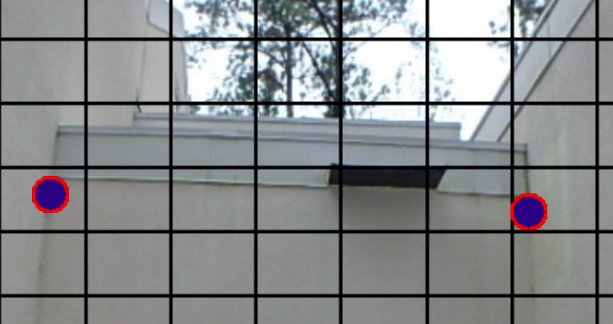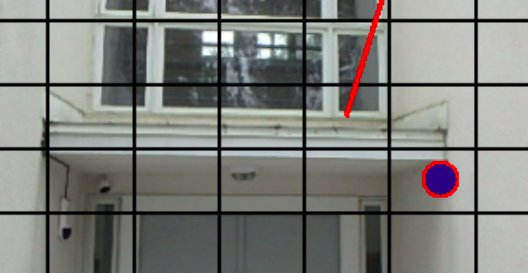Durock revisited
I wrote briefly about durock back in 2010. Here's what I wrote in 2010:
The truth is, there is no Durock system. The Durock system made by United States Gypsum was discontinued in 1999 for water infiltration.
The Durock system was a synthetic stucco system. Durock, the brand of cement board made by USG, had a paper thin (literally) coat of an EIFS basecoat and a synthetic finish. The EIFS basecoat is an adhesive mixed with Portland cement, and made to apply over styrofoam and plastic cloth on EIFS applications. The durock system went real fast because there is no cloth. The synthetic finish is a rubbery paint with plastic sand or a silica sand like marble dust.
This method of a thin synthetic basecoat and finish is widely used, even though no manufacturer endorses it. Don't look at me, I don't do it.
There are other brands of cement board, like wonderboard, hardy backer, etc. The method of the thin EIFS basecoat and synthetic finish is often referred to as DEFS, or direct applied finish system.
One reason USG discontinued the Durock system, is because window flashing couldn't be done. I recenty saw a house in Maryland that had flashing over the windows, even though most of these applications don't have any flashing over the windows. The house had a plywood substrate, the window trim was put on, and then the durock was put on. It does seem like the flashing could be dented or damaged easily, but they did have flashing over the windows. Lack of flashing over the windows and lack of kick out flashing is a major source of rot.
I talked to a USG factory representative in 1999 right after the durock system was discontinued. There were several problems with water infiltration. One, it was almost impossible to put flashing on over the windows, not to mention counter flashings, etc. The house in Maryland was the first I saw with flashing over the window, but it had a layer of sheathing first. Most of theses durock houses didn't have any sheathing but the durock, so there is no way to put the flashing on first. Another reason for water infiltration was condensation. USG recommendations was to put tar paper on the studs, or sheathing first. This rule was rarely followed. Even though the durock seems to be fine to be used for sheathing, it didn't pass the code in most places. This would require plywood or OSB to put on first. Again, this practice was rarely followed. USG wanted to get out of the synthetic business also because of the big uproar about EIFS in the late 90's. Here's a link to the 1999 NOVASHOC forum in Fairfax, Virginia where I talked to the USG rep. We were panel members at a forum for NOVASHOC, which was a group of disgruntled EIFS homeowners. The actions of this forum led to EIFS being removed (quietly removed, mainly) from over 500 houses in Northern Virginia by the builders.
I got a bid invitation for exterior suspended ceilings on schools in Maryland. We used to do suspended stucco ceilings years ago but they went out of style, mainly for the lack of skilled labor. Another reason is the push for fast and cheap, underlining fast for schools. This work can also be done by lower skilled EIFS workers. The specs called for this heavy cement board to be screwed to flimsy drywall grid. Years ago we did ceiling out of channel iron. Drywall grid is like acoustic tile grid. Remind me not to walk under a school ceiling in Maryland.
I have heard DEFS as a soul-less looking material. You see this DEFS used on mordern style houses in Northern Virginia. It looks like plastic sheets covering a house.
I published on my site where DEFS was ripped off a famous Georgetown (Washington, DC) house. Here's a link: The bricks were so badly damaged it required the whole house to be stuccoed for historic appearance.
Question:
I was doing research on stucco over durock and your site came up. This is a lovely home built in the early 1990s in Florida for sale with stucco over durock.
We currently live in a stucco over cement block in South Florida. We have experienced no moisture issues whatsoever in our current home built in the early 1980s.
I read the stucco inspection report and the repair report. If we purchased this home, are we in for continued problems and huge stress load?
Any insights appreciated before we go further.

Roof drives water into wall. This could be corrected with a kick out flashing, but it would require chopping into the wall to tuck the kickout behind the durock. There may be severe rot on the framing.

No kick outs on the roof intersections is a red flag. The durock is applied directly on the studs. Any rot wouldn't show for years.
Don't put mortar on durock !!
Hello, I applied Quickrete base coat to test piece of ½” Durock, ( the rough side),and after three days I was easily able to pop it off with a trowel. I coated another test piece with Quickrete bonding liquid and in less than 48 hours applied base coat. Three days later I accidentally dropped it and the base coat fell off. How do you get stucco to stick well to Durock? Thanks.
I'd like to use durock over 15 lb. felt as a base for an exterior stucco finish. I plan on installing the durock with the rough side out to use in place of the scratch and brown coats. The joints would be taped with mesh tape and compound. Is this feasible? Thanks for your input.
First I can't tell you how much I enjoy reading your site and learning so much about stucco. I am thinking about roughing out a decorative square architectural column (exterior) in Durock and then applying stucco on top. I don't know if you are familiar with Durock or perhaps there is another name for it where you are. It is precast thin sheets of concrete, much like gypsum board, which is used to rough out things like built in showers. Usually ceramic tile is applied on top. I was thinking of using this method because it would be light and easy for me to frame the column in wood and then affix the Durock to it. Are there any concerns to applying the stucco on this material? Is there a better alternative for roughing out a large exterior detail, eg. that has to be water resistant?
Please don't mortar on durock without putting on metal lath first.